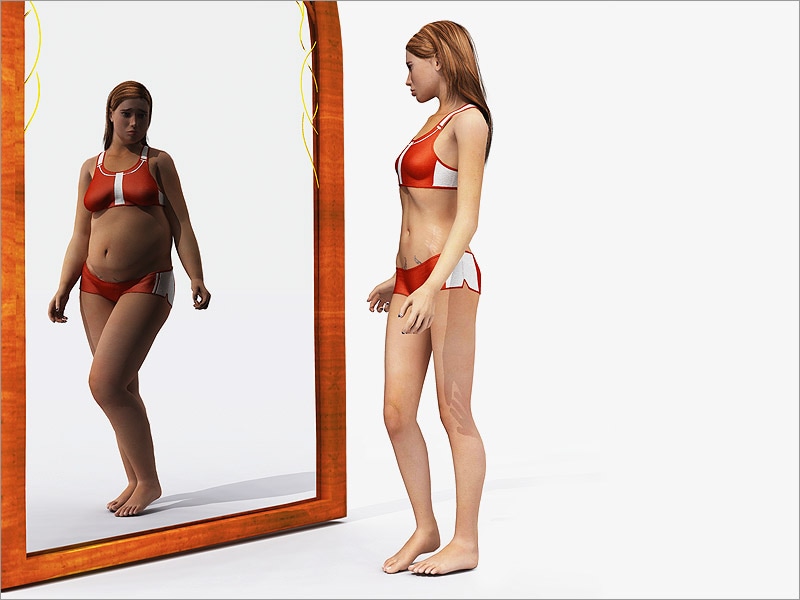Introduction
Body Dysmorphic Disorder (BDD) is a mental health condition that affects how a person perceives their appearance. Often, those suffering from BDD become preoccupied with a specific aspect of their appearance that they believe is flawed, even though this perceived flaw may be minor or nonexistent. Recognizing the signs of BDD is crucial because it can severely impact one’s quality of life, leading to distress, social isolation, and even depression. But what exactly are the signs that you might have BDD? Let’s delve into the seven key indicators.

What is Body Dysmorphic Disorder (BDD)?
Definition of BDD
BDD is characterized by an obsessive focus on a perceived flaw in physical appearance, which is either minor or not observable by others. This disorder is not merely a concern about appearance; it involves a distorted self-image that can lead to significant emotional distress and impairment in daily functioning.
The Distorted Self-Image
People with BDD often see themselves very differently than others do. They may fixate on a specific feature, such as their nose, skin, or body shape, and believe that it is severely flawed. This distorted self-image drives many of the behaviors associated with BDD.
How BDD Differs from Normal Concerns About Appearance
It’s normal to have insecurities about how you look, but BDD goes beyond that. While most people can move past their concerns, those with BDD find it nearly impossible to stop thinking about their perceived flaws, leading to a cycle of obsessive thoughts and behaviors.
Prevalence and Impact
BDD is more common than many realize, affecting approximately 1 in 50 people. It can impact anyone, regardless of age, gender, or background. The disorder not only affects the individual’s mental health but can also strain relationships, hinder job performance, and lead to social withdrawal.
Who is Affected by BDD?
Although BDD can develop at any age, it often starts in adolescence, a time when people are particularly sensitive to their appearance. Both men and women are equally likely to be affected, though they may focus on different aspects of their appearance.
The Psychological and Social Consequences of BDD
The constant worry about appearance can lead to severe anxiety, depression, and even suicidal thoughts. Socially, BDD can cause individuals to avoid situations where they feel their perceived flaw might be noticed, leading to isolation and loneliness.
Sign 1: Obsessive Focus on a Perceived Flaw
The Nature of the Obsession
One of the most telling signs of BDD is the obsessive focus on a particular aspect of one’s appearance. This obsession can dominate thoughts, making it difficult to concentrate on anything else.
The Specifics of the Perceived Flaw
The perceived flaw can be anything—a slightly crooked nose, a small scar, or even the belief that one’s entire face is unattractive. The important point is that the flaw is either very minor or entirely imagined, but to the person with BDD, it feels overwhelming.
How Obsession Can Take Over Daily Life
This obsession can interfere with daily activities, making it hard to focus on work, school, or relationships. The individual may spend hours a day thinking about or trying to fix the flaw, which can lead to significant distress.
Differentiating Between Concern and Obsession
It’s natural to be concerned about how you look, but BDD takes this to an extreme. The worry becomes all-consuming, and the person may engage in repetitive behaviors aimed at fixing or hiding the flaw.
When Worrying Becomes Excessive
Worrying becomes excessive when it starts to interfere with your daily life. For someone with BDD, the perceived flaw is always on their mind, and they might spend hours each day thinking about it or trying to correct it.
The Role of Reassurance-Seeking Behavior
People with BDD often seek reassurance from others about their appearance, asking repeatedly if they look okay. However, this reassurance offers only temporary relief and can reinforce the obsession.
Sign 2: Excessive Grooming or Camouflaging
Common Grooming Behaviors in BDD
Individuals with BDD may engage in excessive grooming behaviors in an attempt to improve or hide their perceived flaw. This can include applying makeup multiple times a day, repeatedly changing outfits, or spending hours styling their hair.
Makeup, Hairstyles, and Clothing Choices
Makeup and clothing become tools for camouflaging the flaw. Someone with BDD might apply heavy makeup to cover a blemish or wear certain styles of clothing to hide a perceived body issue.
Seeking Perfection Through Repeated Actions
The quest for perfection can lead to repetitive grooming actions that provide temporary relief but do not address the underlying issue. This behavior can be time-consuming and stressful, further exacerbating the disorder.
The Psychological Impact of Camouflaging
While camouflaging might seem like a solution, it often leads to more distress. The individual may feel they cannot be seen without their makeup or specific clothing, leading to avoidance of social situations.
The Desire to Hide or Fix the Flaw
Camouflaging is driven by the desire to either hide the flaw from others or fix it temporarily. However, this behavior can reinforce the belief that the flaw is unacceptable and must be hidden at all costs.
How Camouflaging Affects Social Interactions
Constantly feeling the need to hide a perceived flaw can make social interactions stressful. The person may avoid close contact with others or become anxious in situations where their camouflage might be disrupted.
Sign 3: Avoidance of Social Situations
The Fear of Being Judged
For those with BDD, social situations can be terrifying because of the fear that others will notice and judge their perceived flaw. This fear can lead to significant social anxiety.
Social Anxiety and BDD
Social anxiety is common in people with BDD. The fear of negative evaluation can cause them to avoid social situations altogether, leading to isolation and loneliness.
The Isolation That Follows
Avoidance of social situations can lead to a vicious cycle of isolation. The more isolated the person becomes, the more their symptoms may worsen, leading to further withdrawal.
Impact on Daily Life and Relationships
The avoidance of social situations doesn’t just impact the individual; it can also strain relationships with friends, family, and colleagues.
Avoiding Events, Work, or School
Someone with BDD might skip important events, call in sick to work, or avoid school due to their anxiety about their appearance. This avoidance can have serious consequences, such as missed opportunities or deteriorating job performance.
Strain on Personal Relationships
Relationships with loved ones can suffer when a person with BDD becomes increasingly withdrawn. Friends and family might not understand the severity of the disorder, leading to frustration and misunderstanding.
Sign 4: Frequent Mirror Checking or Avoidance
The Paradox of Mirror Checking
Mirror checking is a common behavior in BDD. The person might spend hours staring at their reflection, trying to find reassurance that their flaw is not as bad as they think.
Seeking Reassurance in the Mirror
The mirror becomes a tool for seeking reassurance. However, no matter how much they look, the person with BDD is never satisfied and may become more distressed the more they check.
The Anxiety of Never Being Satisfied
Each time they check the mirror, they may find new “flaws” or feel more anxious about the ones they were already concerned about. This cycle can be exhausting and debilitating.
Mirror Avoidance
Conversely, some people with BDD avoid mirrors altogether. The fear of seeing their perceived flaw can be so intense that they would rather not look at themselves at all.
The Fear of Confronting the Flaw
Avoidance of mirrors is a way to cope with the anxiety of seeing their reflection. However, this avoidance can reinforce the belief that the flaw is too horrible to be seen.
How Avoidance Reinforces Negative Beliefs
Avoiding mirrors doesn’t make the anxiety go away; it can actually make it worse. The person may become more convinced that their flaw is real and unbearable, leading to further distress.
Sign 5: Compulsive Comparisons with Others
The Need to Measure Up
People with BDD often compare themselves to others, whether it’s friends, celebrities, or even strangers. This comparison can become a compulsive behavior that fuels their obsession with their perceived flaw.
Comparing Yourself to Peers or Celebrities
Social media has made it easier than ever to compare yourself to others, and for someone with BDD, this can be particularly damaging. They may spend hours scrolling through photos, feeling increasingly inadequate.
The Impact of Social Media on BDD
Social media can amplify feelings of inadequacy, as people with BDD often compare themselves to the highly curated and edited images they see online. This can lead to a worsening of symptoms and increased dissatisfaction with their appearance.
The Emotional Toll of Constant Comparison
The constant comparison can take a heavy emotional toll, leading to feelings of inferiority, low self-esteem, and depression.
Feelings of Inferiority and Low Self-Esteem
When you’re constantly comparing yourself to others, it’s easy to feel like you don’t measure up. This can lead to a spiral of negative thoughts and feelings, further entrenching the disorder.
The Vicious Cycle of Comparison and Obsession
The more a person with BDD compares themselves to others, the more obsessed they become with their perceived flaw. This creates a vicious cycle where the obsession feeds the comparison, and the comparison feeds the obsession.
Sign 6: Seeking Frequent Cosmetic Procedures
The Quest for Physical Perfection
One of the more extreme signs of BDD is the frequent pursuit of cosmetic procedures to “fix” the perceived flaw. This can include plastic surgery, dermatological treatments, or other cosmetic interventions.
The Role of Plastic Surgery and Other Interventions
People with BDD may believe that a cosmetic procedure will solve their problems and make them feel better about themselves. However, this is often not the case, and the dissatisfaction persists even after the procedure.
How Procedures Can Exacerbate BDD
Unfortunately, cosmetic procedures can sometimes make BDD worse. The person may become obsessed with the results, seeking more and more procedures in an attempt to achieve an impossible standard of beauty.
The Never-Ending Desire for Change
The desire to change one’s appearance can become all-consuming, leading to a never-ending cycle of procedures that never truly satisfy the individual’s needs.
Dissatisfaction Even After Procedures
Even after undergoing multiple procedures, a person with BDD is often still unhappy with their appearance. They may fixate on new flaws or become dissatisfied with the results, leading to more procedures.
The Psychological Harm of Chasing Perfection
Chasing an unattainable standard of perfection can be psychologically damaging, leading to increased anxiety, depression, and a further deterioration of mental health.
Sign 7: Distress and Impairment in Daily Functioning
The Emotional Pain of BDD
Living with BDD can be emotionally painful. The constant worry and dissatisfaction can lead to significant distress, impacting every aspect of a person’s life.
Anxiety, Depression, and Other Mental Health Issues
BDD is often accompanied by other mental health issues, such as anxiety, depression, and obsessive-compulsive disorder (OCD). These conditions can compound the emotional pain and make it even harder to cope.
How BDD Affects Overall Well-Being
The impact of BDD on overall well-being cannot be overstated. It can affect everything from physical health to relationships, making it a debilitating disorder that requires serious attention.
The Impact on Career, Education, and Social Life
BDD doesn’t just affect a person’s emotional state; it can also impair their ability to function in daily life.
Missed Opportunities and Stalled Progress
Whether it’s skipping work, avoiding school, or turning down social invitations, BDD can lead to missed opportunities and stalled progress in life. This can create a sense of failure and further feed the disorder.
The Struggle to Maintain a Normal Life
Maintaining a normal life can feel impossible when BDD is in control. The constant worry and obsession can make it difficult to keep up with the demands of daily life, leading to a downward spiral.
How to Seek Help if You Suspect You Have BDD
Understanding the Importance of Professional Help
If you suspect you have BDD, it’s crucial to seek professional help. BDD is a serious disorder that can have severe consequences if left untreated, but with the right treatment, it is possible to manage and overcome the symptoms.
The Role of Therapy in Treating BDD
Therapy, particularly cognitive-behavioral therapy (CBT), is one of the most effective treatments for BDD. CBT can help you challenge and change the negative thoughts and behaviors associated with the disorder.
Medication and Other Treatment Options
In some cases, medication, such as selective serotonin reuptake inhibitors (SSRIs), may be prescribed to help manage the symptoms of BDD. Other treatment options include group therapy, family therapy, and mindfulness-based approaches.
Finding the Right Support
In addition to professional help, having a strong support network is essential in managing BDD.
Reaching Out to Friends and Family
Letting friends and family know what you’re going through can be incredibly helpful. They can offer support, understanding, and encouragement as you navigate your treatment.
Building a Support Network
Joining a support group for individuals with BDD can also be beneficial. Sharing your experiences with others who understand what you’re going through can provide comfort and reduce feelings of isolation.
Conclusion
Recognizing the signs of Body Dysmorphic Disorder is the first step toward getting the help you need. BDD is a serious condition that can affect every aspect of your life, but it is treatable. If you recognize any of these signs in yourself or someone you know, don’t hesitate to seek professional help. Early intervention can make a significant difference in managing the disorder and improving quality of life.
FAQs
What is the difference between BDD and low self-esteem?
BDD involves an obsessive focus on a perceived flaw that significantly impairs daily functioning, whereas low self-esteem is a more general sense of dissatisfaction with oneself without the obsessive behaviors and distorted self-image.
Can BDD go away on its own?
BDD typically does not go away on its own and may worsen over time without treatment. Professional intervention, such as therapy and medication, is often necessary to manage the symptoms.
How can I support someone with BDD?
Supporting someone with BDD involves being patient, understanding, and encouraging them to seek professional help. Avoid reinforcing their negative beliefs about their appearance and offer positive, non-appearance-based support.
Is BDD treatable?
Yes, BDD is treatable. With therapy, medication, and support, individuals with BDD can manage their symptoms and lead fulfilling lives. Early intervention is key to successful treatment.
Are there any online resources for learning more about BDD?
Yes, there are many online resources available, including websites from mental health organizations, support groups, and forums where individuals can share their experiences and find information about BDD.




